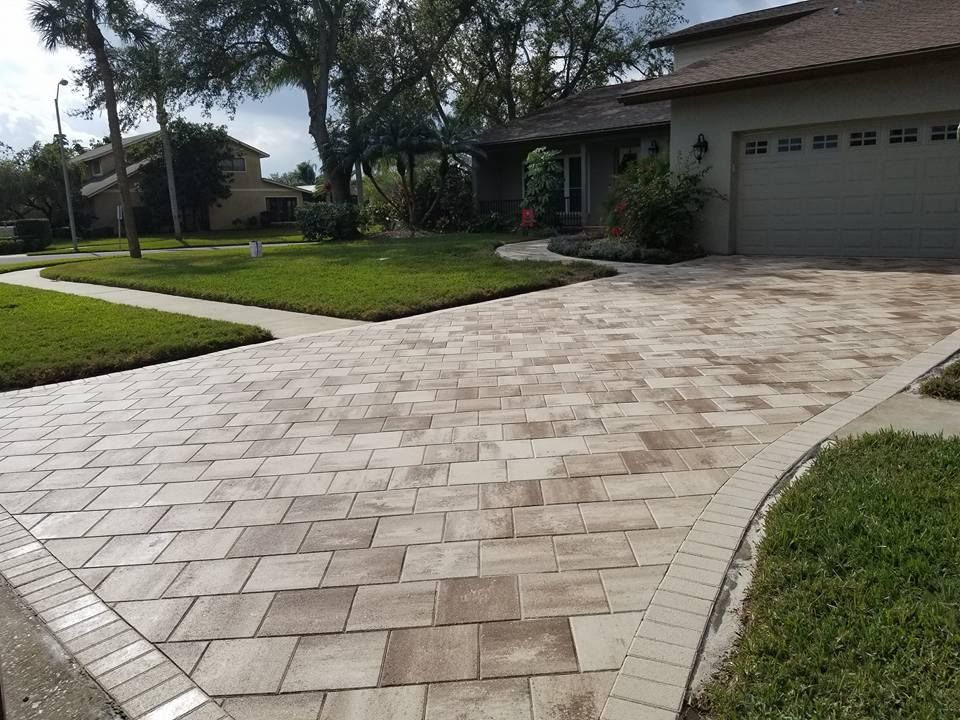A beautiful retaining wall in your property not only adds a touch of luxury and beauty but also serves many different purposes such as preventing soil erosion, acting as a boundary marker, flood control barrier, and more. However, there are a lot of factors that need to be considered to build a retaining wall that functions properly. These include the foundation, the support, the backfill, and the drainage. Thus, you need to consult with a reputed professional to make sure the retaining wall in your property serves its functions flawlessly and lasts a long time. You can easily find hardscape contractors near your region by searching “paving companies near me” online.
How a retaining wall is constructed
The importance of properly constructing a retaining wall in your property cannot be understated. Given below are some of the most important factors that you need to consider for building a proper retaining wall:
- Foundation – The foundation base for a short step-back retaining wall with 3 to 5 layers of blocks or courses can be built by filling a trench with compacted gravel. However, it is important to build a buried structural footing when constructing a large retaining wall, especially in a location where the moisture in the soil can freeze and heave. Otherwise, a shallow foundation can shift and move and destroy the wall. To avoid such problems, the concrete is poured below the frost level to create a strong buried structural footing for a large retaining wall.
Since the frost level differs in different regions, it is crucial to contact the local building department for guidance.
- Backfill – The space directly behind the retaining wall should not be filled with soil since it absorbs water and swells when saturated. This is bad since saturated soil can put pressure against the back of the retaining wall. Gravel and sand are better alternatives since they don’t retain water which reduces the risk of damage, cracks, or even a complete failure.
- Support – Typically, retaining walls are constructed to slightly slope towards the soil that it was built to contain by applying pressure against it. Such a design is called a step-back construction. However, vertical retaining walls often require extra structural support if they are over three feet in height and in many other cases. The support can be in the form of steel rebar, buried footings, cantilevered design, or even a gravity wall.
- Drainage – It is important to install a drainage tile behind the retaining wall so that the groundwater is allowed to easily flow to the outlets that would drain the water properly. Without a proper drainage system in place, the water would not drain and apply pressure on the retaining wall which can cause cracks in it.
The benefits of constructing a retaining wall
Some of the most important benefits of constructing a retaining wall in your property are listed below:
- It prevents soil erosion – The most important benefit of building a retaining wall in your property is that they prevent soil erosion, especially on sloped surfaces. If you build a retaining wall on the border of your property or on the edge of a slope, it will level the slope and prevent the soil from eroding in a downward line due to excess water runoff. As a result, it will significantly slow down soil erosion on your property.
- It prevents flooding – Unexpected downpours often result in flooding that can cause property damage and lead to excessive soil erosion. A well-constructed retaining wall can prevent flooding and hold the soil in place even during heavy rain. As a result, they are a must in flood-prone areas.
- It eliminates the risk of accident damage to nearby structures – Without proper support, the soil in an elevated area can collapse to the lower region surrounding it during an earthquake, a flooding event, or even due to constant soil erosion. Thus, if your home is built on uneven land, it is better to prepare for such calamities and try to prevent them from happening instead of fixing the damage when it occurs. A retaining wall helps to sustain the soil in an elevated area, prevents it from collapsing to the lower area, and prevents any structural damage that might occur as a result of such a collapse.
- It helps to improve the beauty of your property – Retaining walls can be utilized to improve the natural beauty of your property, especially if your yard has a lot of slopes. You can create many different types of retaining walls from different types of materials such as bricks, concrete blocks, boulders, concrete, gabions, wood, and more for different purposes such as serving as the centerpiece in your backyard or focusing the attention on a beautifully designed vertical flower garden. It is even possible to build a retaining wall in your barbeque area or patio to serve as natural decor.
- It can open up space for a sitting area – Since most retaining walls in a garden or yard have a low height, it also serves as a sitting spot. In fact, people consider retaining walls a natural sitting spot inside large gardens and parks for reading, relaxing, conversing, or even birdwatching.
- It improves the value of your home – A property with a beautiful exterior will impress more clients and create a far better value impression as well. Retaining walls improve the aesthetics and functional value of your property and thus, serve as a good investment as well if you want to sell your property in the future.
Conclusion
Hopefully, after reading this article, you have realized the amazing benefits of building a retaining wall in your property and why it’s important to understand how a retaining wall is constructed. For further discussion on the subject and to construct a beautiful and secure retaining wall in your property, search “paving companies near me” on Google to find and hire professional hardscape contractors in your locality.






More Stories
Choosing the Right Denver Concrete Contractors: Your Guide to Quality Construction
5 Benefits Of Conveyor Belt Products